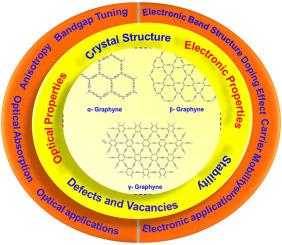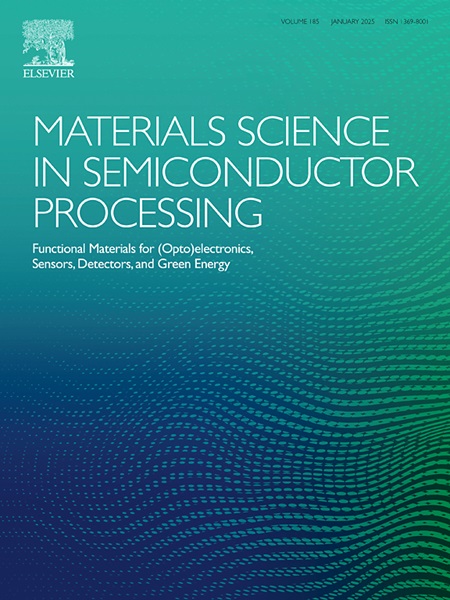Understanding graphyne; theoretical insights and its optoelectronic behaviour
IF 4.2
3区 工程技术
Q2 ENGINEERING, ELECTRICAL & ELECTRONIC
引用次数: 0
Abstract
Two-dimensional Graphynes (GYs) exhibit extraordinary properties, owing to the highly conjugated doubly and triply bonded carbon atoms in the hexagonal lattice. Recently, γ-GYs have attracted tremendous interest due to its exciting electrical and optical properties and it is necessary to comprehend these properties for future research in this field. This review focus on discussing the fundamental chemistry of the combination of sp and sp2 hybridization in GYs that contributes to its unique properties, particularly opto electrochemical properties of GYs. A detailed track record against a set of properties for developing efficient GYs based materials will help us look ahead in the right direction. The theoretical analysis of the electronic band structure of GYs, stability in relation to sp hybridization, experimental techniques used to tune their optical bandgap, and to improve mobility and carrier lifetimes, are covered in this review. The review then lists the merits of using GYs in various photo and electrochemical applications. Finally, current difficulties and future prospects for using these materials for the specified purpose are discussed.

了解石墨;理论见解及其光电行为
二维石墨炔(GYs)由于在六方晶格中存在高度共轭的双键和三键碳原子而表现出非凡的特性。最近,γ-GYs 因其令人兴奋的电学和光学特性引起了人们的极大兴趣,因此有必要了解这些特性,以便今后在该领域开展研究。这篇综述将重点讨论γ-GYs 中sp 和 sp2 杂化结合的基本化学性质,这种化学性质有助于形成其独特的性质,尤其是γ-GYs 的光电化学性质。针对开发基于 GYs 的高效材料的一系列特性的详细跟踪记录将有助于我们朝着正确的方向前进。本综述介绍了 GYs 电子能带结构的理论分析、与 sp 杂化有关的稳定性、用于调整其光带隙以及提高迁移率和载流子寿命的实验技术。然后,综述列举了在各种光电和电化学应用中使用 GYs 的优点。最后,还讨论了将这些材料用于特定用途的当前困难和未来前景。
本文章由计算机程序翻译,如有差异,请以英文原文为准。
求助全文
约1分钟内获得全文
求助全文
来源期刊

Materials Science in Semiconductor Processing
工程技术-材料科学:综合
CiteScore
8.00
自引率
4.90%
发文量
780
审稿时长
42 days
期刊介绍:
Materials Science in Semiconductor Processing provides a unique forum for the discussion of novel processing, applications and theoretical studies of functional materials and devices for (opto)electronics, sensors, detectors, biotechnology and green energy.
Each issue will aim to provide a snapshot of current insights, new achievements, breakthroughs and future trends in such diverse fields as microelectronics, energy conversion and storage, communications, biotechnology, (photo)catalysis, nano- and thin-film technology, hybrid and composite materials, chemical processing, vapor-phase deposition, device fabrication, and modelling, which are the backbone of advanced semiconductor processing and applications.
Coverage will include: advanced lithography for submicron devices; etching and related topics; ion implantation; damage evolution and related issues; plasma and thermal CVD; rapid thermal processing; advanced metallization and interconnect schemes; thin dielectric layers, oxidation; sol-gel processing; chemical bath and (electro)chemical deposition; compound semiconductor processing; new non-oxide materials and their applications; (macro)molecular and hybrid materials; molecular dynamics, ab-initio methods, Monte Carlo, etc.; new materials and processes for discrete and integrated circuits; magnetic materials and spintronics; heterostructures and quantum devices; engineering of the electrical and optical properties of semiconductors; crystal growth mechanisms; reliability, defect density, intrinsic impurities and defects.
 求助内容:
求助内容: 应助结果提醒方式:
应助结果提醒方式:


